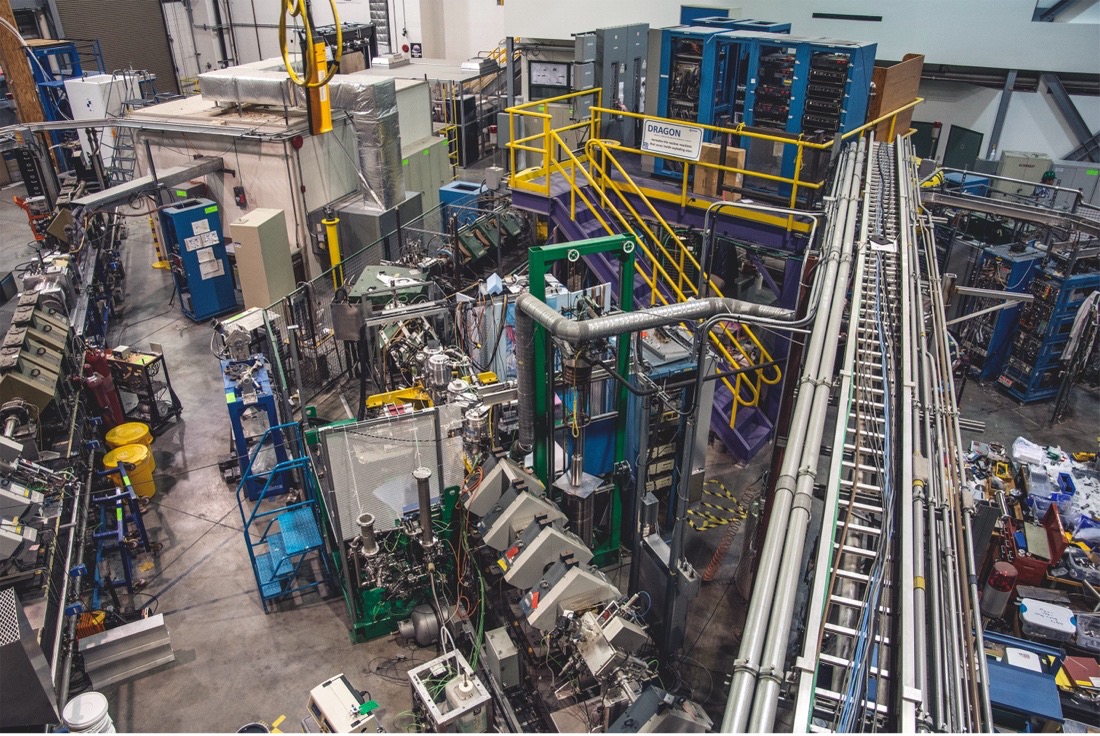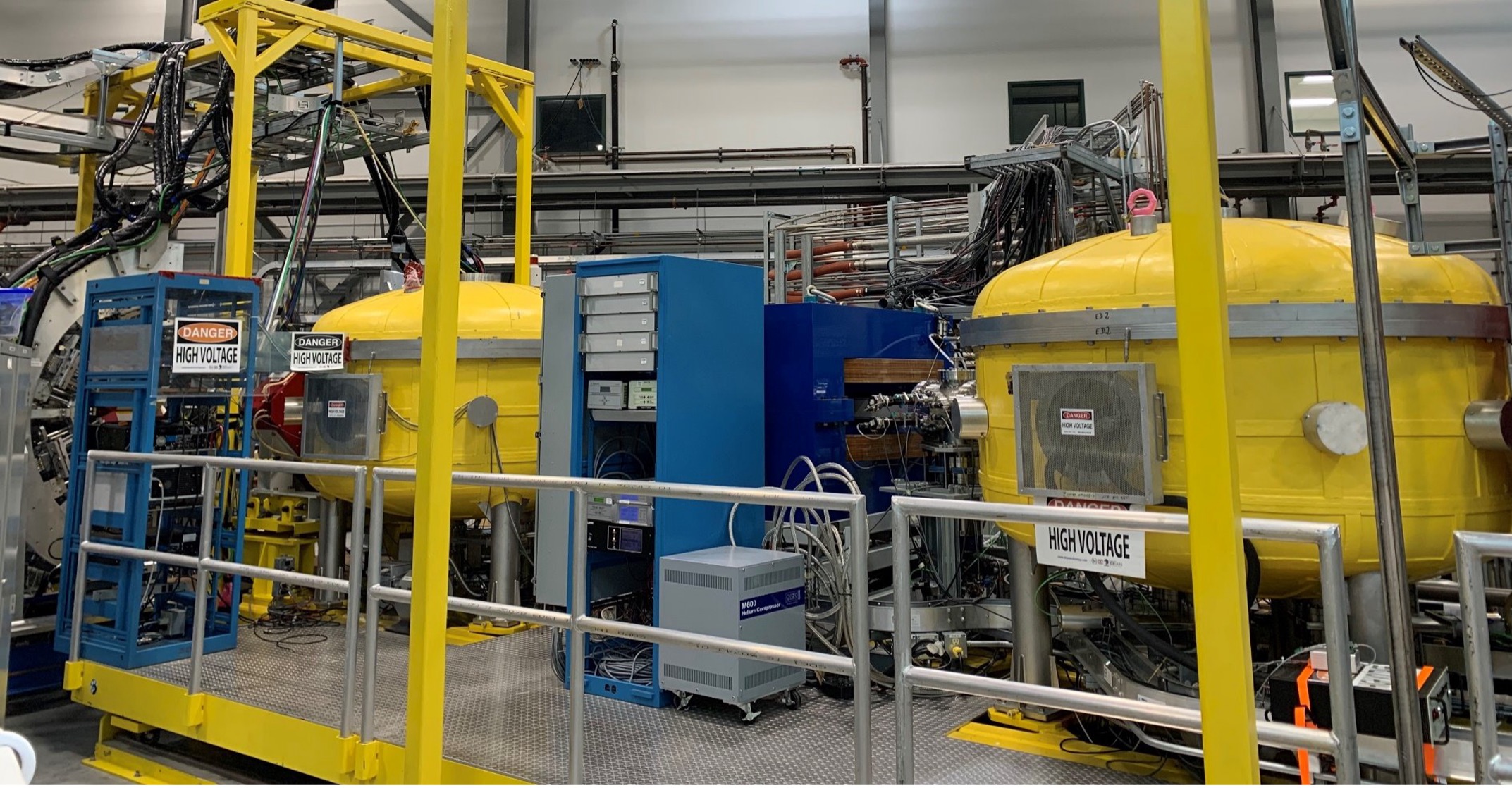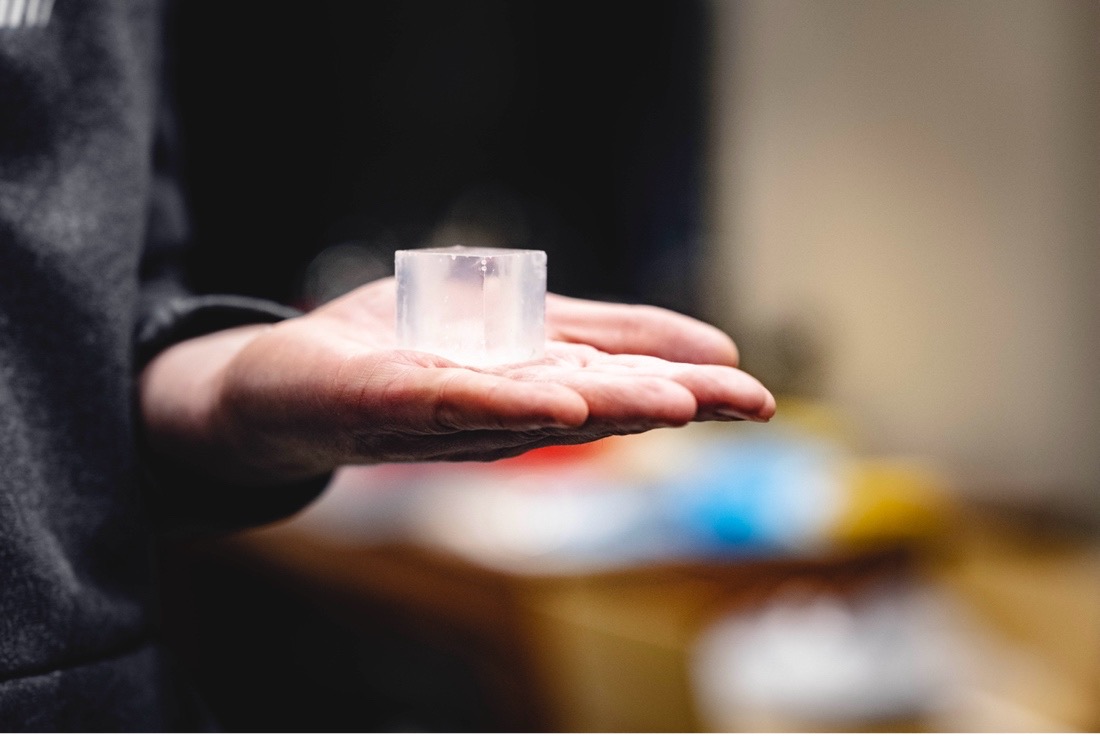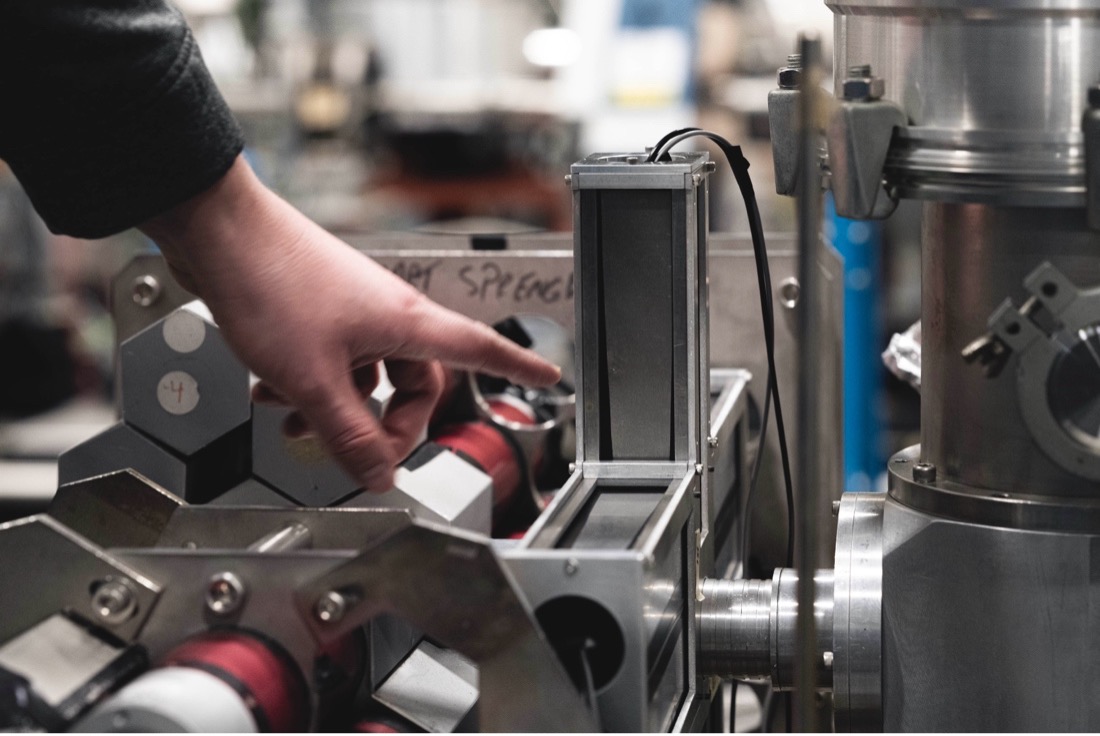In the fascinating realm of nuclear physics, two sister facilities, DRAGON (ISAC-I) and EMMA (ISAC-II), have been making strides in advancing our understanding of nuclear reactions and their astrophysical implications, including how and at what rate elements are formed within different life stages of stars, including their deaths in powerful explosions.
Sharing personnel and utilizing similar technologies, these TRIUMF facilities serve as indispensable tools for unraveling the mysteries of the cosmos.
DRAGON (the Detector of Recoils And Gammas Of Nuclear reactions), is akin to a precision surgical scalpel, operating as a so-called recoil separator specifically designed for the radiative capture reactions at low to intermediate energies that are crucial for astrophysics in stellar burning scenarios. On the other hand is EMMA, a versatile, ‘multi-tool' recoil mass spectrometer that operates at higher energies and offers a broader variety of applications related to the investigation of supernovae and the element creation, or nucleosynthesis.

As part of a set of experiments run in December 2023, TRIUMF researchers and visiting scientists from York University delved into a specific set of mechanisms called (a,n) (“alpha-n”) reactions, a family of processes that produce neutrons and thus play a pivotal role in nuclear astrophysics. These reactions contribute to the 'weak r-process' in supernovae, where they influence the formation of heavy elements; they also serve as a significant source of slow-neutron capture in old, giant stars, producing elements beyond zinc.

Leveraging the unique capabilities of EMMA, the teams measured for the first time a radioactive beam-induced (a,n) reaction – specifically, 94Sr(a,n)97Zr. Utilizing the TIGRESS array to detect gamma rays from 97Zr, this important result provides valuable insights into our understanding of nuclear interactions, as well as a first estimate of the cross-section of the reaction.
Meanwhile, DRAGON achieved a technological milestone with the first proof-of-concept test of an organic glass scintillator (OGS)-photomultiplier apparatus, laying the groundwork for future experiments investigating (a,n) reactions, particularly 22Ne(a,n), which is a reaction of considerable importance as a source of neutrons in the so-called astrophysical “s-process”.
Chris Ruiz, DRAGON group leader, explains: "The DRAGON results show us that we can use the device for something it was never intended for to effectively extract critical data for astrophysics, leveraging the powerful properties of the recoil separator itself and adding in these novel detectors made from a very promising new material. Collaboration with external universities (namely SMU and U. Surrey) has been invaluable here, with them binvesting in these new materials and coming up with the idea for the studies.”
Examining the technologies at the forefront, EMMA's success relied on novel 4He-implanted targets, fabricated by evaporating silicon onto Al foils in a helium environment. DRAGON, on the other hand, harnessed the power of organic glass scintillator detectors, created by pouring liquid glass into molds and set to achieve optimized geometry. Paired with photomultiplier tubes, these detectors detect neutrons from (a,n) reactions.

(Image: Louis Wagner, Postdoctoral Researcher - Recoil Separator, holds a cube of organic glass scintillator)

(Image: the OGS-PMT rack. The OGS cubes are arranged in a 3x3 grid, with the centre cube removed to allow the beam pipe to pass through)
As these sister facilities continue to push the boundaries of nuclear physics, their collaborative efforts promise a deeper understanding of the cosmos, with each facility serving as a unique and indispensable tool in advancing our understanding of how stars burn and produce the elements we see in the world around us.
The experiments, which are led by Prof. G. Lotay (University of Surrey, UK) and Prof. Greg Christian (Saint Marys University, NS) for DRAGON with Dr. Matthew Williams (University of Surrey, UK), C. A. Diget and A.M. Laird (both from University of York, UK) leading the EMMA team.
Congratulations to the DRAGON and EMMA teams!
Thanks to article contributors Chris Ruiz and Barry Davids.
For more information:
